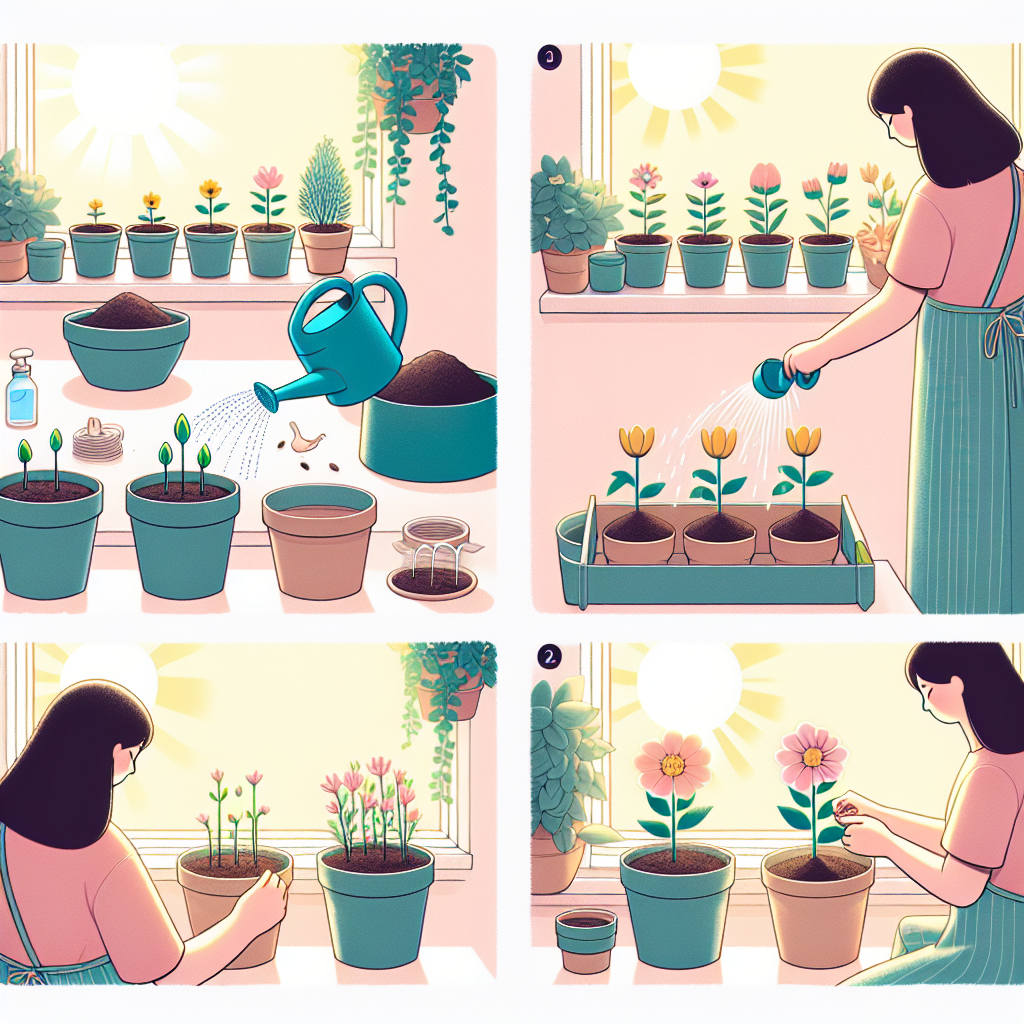
How to grow flowers indoors
How to Grow Flowers Indoors: A Comprehensive Guide
Growing flowers indoors is a delightful way to bring nature into your home, enhance your living space, and even boost your mood. With the right knowledge and care, you can cultivate beautiful blooms from the comfort of your own kitchen, living room, or any other part of your home. In this article, we will explore effective strategies, essential tips, and the best practices for flourishing indoor flowers.
Understanding Indoor Flower Potting
Growing flowers indoors requires an understanding of potting requirements, including soil selection, pot size, and drainage. Let’s break it down:
- Soil: Choose high-quality potting soil specifically designed for indoor flowering plants. This enriched medium promotes healthy growth.
- Pot Size: Select a pot that allows for adequate root development. Generally, a pot that is 6-12 inches in diameter works well for most flowering plants.
- Drainage: Ensure your pots have drainage holes to prevent water from accumulating, which can cause root rot.
Choosing the Right Flowers
When deciding how to grow flowers indoors, it's crucial to select flowers that thrive in an indoor environment. Here’s a list of popular indoor flowers:
- African Violets: Known for their attractive flowers and fuzzy leaves, they bloom year-round.
- Peace Lilies: These plants have elegant white blooms and can thrive in low-light conditions.
- Geraniums: Easy to grow and available in a multitude of colors, geraniums add a vibrant touch to any room.
- Orchids: With their exotic appearance, orchids require specific care but produce breathtaking flowers.
- Begonias: Featuring striking foliage and flowers, begonias are versatile and ideal for indoor settings.
Creating the Ideal Environment
Indoor flowers thrive when they are placed in the right environment. Here are key factors to consider:
Light Requirements
Most flowers require adequate sunlight to bloom effectively. Consider the following light conditions:
- Direct Light: Flowers like geraniums and sunflowers need several hours of direct sunlight each day.
- Indirect Light: Plants like peace lilies and orchids prefer bright, indirect light.
- Low Light: Choose varieties that can survive in low-light conditions, such as snake plants.
Temperature and Humidity
Maintaining the right temperature and humidity level is vital for indoor flower growth. Most flowering plants thrive in temperatures ranging from 65°F to 75°F (18°C to 24°C). Here are further guidelines:
- Keep plants away from drafts, heaters, and air conditioning vents to avoid temperature fluctuations.
- Consider using a humidifier if you live in a dry climate, or periodically mist your plants to increase humidity.
Watering Techniques
Overwatering is one of the most common mistakes indoor gardeners make. Here are some tips for effective watering:
- Check the soil moisture regularly. Stick your finger about an inch into the soil; if it feels dry, it's time to water.
- Water deeply and allow water to drain out of the bottom of the pot, but don’t let the plant sit in standing water.
- Adjust watering frequency based on the season; plants often need less water in the winter.
Nutrition and Fertilization
To promote healthy growth, your flowering plants need nutrition in the form of fertilizers. Here’s how to fertilize effectively:
- Choose the Right Fertilizer: Look for a balanced, water-soluble fertilizer formulated for flowering plants.
- Timing: Fertilize every 4-6 weeks during the growing season (spring and summer) and reduce in fall and winter.
- Application: Dilute the fertilizer in water and apply it directly to the soil, avoiding the foliage to prevent burning.
Pest Control
Indoor plants can attract pests. It’s crucial to monitor your flowers and take action promptly. Here are some common pests and remedies:
- Aphids: These small, sap-sucking insects can be removed with a strong stream of water or insecticidal soap.
- Spider Mites: Look for tiny webbing; increase humidity or use neem oil to deter them.
- Mealybugs: These white, cotton-like pests can be wiped off with a cotton swab dipped in alcohol.
Repotting and Care
As your flowers grow, they may need to be repotted. Signs that it's time to repot include:
- Root binding: If roots are growing out of the drainage holes.
- Stunted growth: If the plant isn't thriving despite proper care.
- Soil depletion: When the original soil breaks down and no longer supports healthy growth.
How to Repot Flowers Indoors
Follow these steps for successful repotting:
- Choose a new pot that is 1-2 inches larger in diameter.
- Gently remove the plant from its current pot, taking care not to damage the roots.
- Loosen the root ball if tightly bound and remove any dead roots.
- Add fresh potting soil to the new pot and place the plant in the center.
- Fill in around the edges with new soil and water thoroughly.
Common Indoor Flowering Plant Problems
How to grow flowers indoors successfully may not always be straightforward. Here are some issue to be aware of and how to address them:- Yellowing Leaves: This can indicate overwatering or nutrient deficiencies. Adjust your watering habits and consider fertilizing.
- Wilting: Check for underwatering, or conversely, look for root rot if the soil is soggy.
- Failure to Bloom: This can occur due to insufficient light or inadequate fertilization. Assess the plant's environment and nutrient supply.
Conclusion
Growing flowers indoors can be a gratifying endeavor that adds beauty and life to your space. By selecting the right flowers, providing adequate light, water, and nutrients, and understanding their care requirements, you can enjoy a flourishing indoor garden. With these insights and strategies, you are well on your way to discovering the joy of indoor floriculture!
``` This article contains headings and paragraph structures that provide an engaging and informative read, adhering to the specified formatting and keyword usage guidelines.By Guest, Published on September 25th, 2024